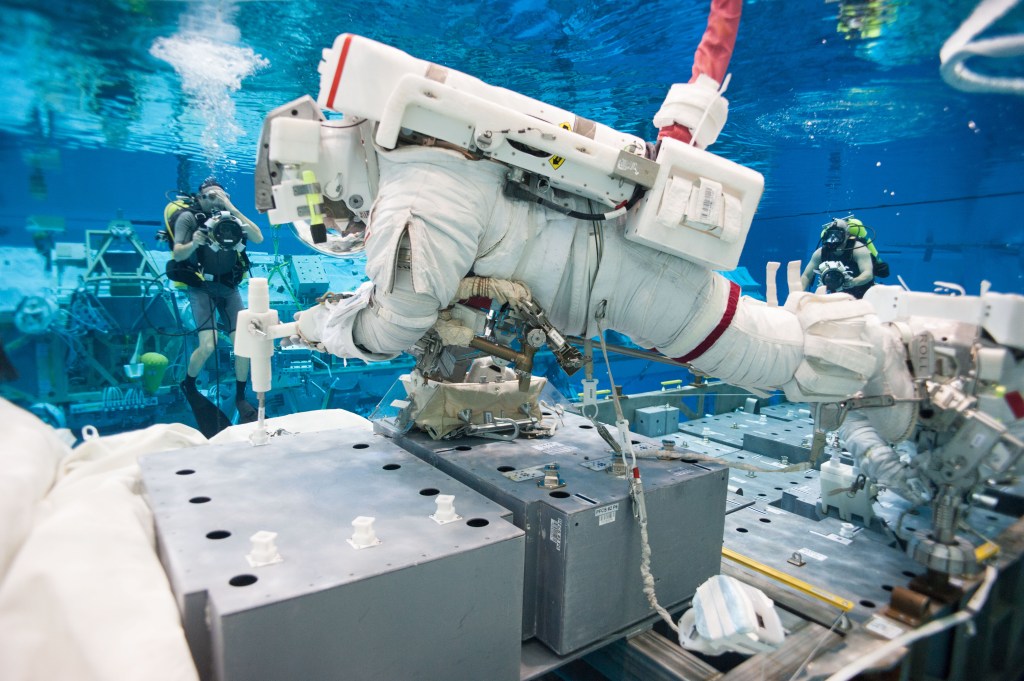3.0 Systems Engineering Processes

3.0 SYSTEMS ENGINEERING PROCESSES
Methods for incorporating an understanding of human capabilities, limitations, and functions (including ill, injured, and deconditioned states) are to be described in an implementation process resulting in performance technical requirements. This strategy ensures that human performance is consistently addressed with system performance throughout the system life cycle and that the design is informed and enhanced by evaluations of human performance-related risks and considers human integration at all levels of the system, from individual components to the level of the complete integrated system.
3.1 Systems Engineering Processes
This NASA Technical Standard is tightly linked with NPR 7123.1B, NASA Systems Engineering Processes and Requirements, and NPR 8705.2. NPR 7123.1 requires a human-centered design (HCD) process along with a Human Systems Integration Plan (HSIP). The HCD process is characterized by task analysis, prototyping, early user involvement, and iterative, developmental human-in-the-loop (HITL) testing. The HSIP includes guidance for implementing and integrating human considerations into the system acquisition and development processes to enhance human system design, reduce life-cycle ownership cost, and optimize total system performance. NASA HSI domains include human factors engineering, operations, safety, training, maintainability and supportability, and habitability and environment. These six NASA HSI domains are considered concurrently and integrated with all other systems engineering design activities. NPR 8705.2 requires the program/project to establish a human-systems integration team to support the implementation of the HSIP. NASA-STD-3001 extends human-centric design and HSI as outlined in NPR 7123.1 NASA Systems Engineering Processes and Requirements and NPR 8705.2 Human-Rating Requirements for Space Systems.
3.2 Human-Centered Task Analysis
[V2 3006] Each human spaceflight program or project shall perform a human-centered task analysis to support systems and operations design.
[Rationale: A task analysis is a methodical and iterative process that analyzes tasks allocated to the human by decomposing individual tasks into simpler actions (task steps) and identifying the task parameters and conditions that can either enable or constrain human interface interactions, including identification of information required to perform the task. The focus of the task analysis is on the human and how they interact, both physically and mentally, with the hardware, software, procedures, and other users of the system to perform the tasks. It spans all mission phases and includes nominal, maintenance, contingency, and emergency operations. A task analysis may be performed for any human interaction with the system and is not restricted to flight crew.
The task analysis can be initiated as early as the Concept and Technology Development phase, when baseline mission concepts, requirements, technologies, and the human role are being defined. As design concepts are iteratively evaluated and matured, task definitions are refined. By the critical design phase, the task analysis should be a mature product. A task analysis can be iteratively updated after the critical design phase and even after certification to reflect changes in design or operational use between missions. Task analysis can be used in the development or identification of gaps in requirements. The analysis is used to drive design, developmental human-in-the-loop (HITL) evaluation, and verification efforts for task effectiveness, efficiency, satisfaction and safety. It also informs the development of human error analysis, operational procedures, and training. Task analysis is critical to the implementation and verification of numerous other technical requirements. For more information, see 4.1 in the HIDP.
Task analysis will be updated and delivered throughout the development lifecycle as contractual data requirements in Statements of Work, Data Requirements Documents (DRDs), Data Procurement Documents (DPDs), joint or multilateral agreements, and/or relevant Verification Closure Notices (VCNs).]
3.3 Human Error Analysis
[V2 3102] Each human spaceflight program or project shall perform a task-based human error analysis (HEA) to support systems and operations design.
[Rationale: HEA is a systematic approach to evaluate human actions and identify potential human error, consequences, and mitigations. Potential human errors include inadvertent operator actions, failure to perform an action, performing a wrong action, performing an action incorrectly, and performing an action with incorrect timing. The intent of the HEA is to identify human error and apply the appropriate error management to mitigate its effect on the system by designing the system according to the following precedence: (1) prevent the error, (2) reduce the likelihood of the error and provide the capability for detection in time to correct and recover, and (3) limit the negative effects of the error.
HEA spans all mission phases and includes nominal, contingency, and emergency operations, including ground operations when crew is present. It includes interactions with hardware, software, procedures, and other users of the system. Since the number of tasks associated with a system’s operation and maintenance can be immense, the HEA should focus on those tasks, as defined by task analysis and safety hazard analyses, that are most important to mission success, starting with those that could result in catastrophic failure.
The HEA is used to identify and mitigate error traps in design and assist in scoping the selection of task sequences and scenarios for human-in-the-loop (HITL) verification testing. The HEA will be updated and delivered throughout the development lifecycle as contractual data requirements in either Statements of Work, Data Requirements Documents (DRDs), Data Procurement Documents (DPDs) and/or Verification Closure Notices (VCNs). A summary of the human error analysis performed and how the results influenced the system design is required to be included in the Human Error Analysis Summary Report in the Human Rating Certification Package at each lifecycle milestone design review.]
3.4 Iterative Developmental Testing
[V2 3101] Each human spaceflight program or project shall perform iterative human-in-the-loop (HITL) testing throughout the design and development cycle.
[Rationale: As a key component of the HCD process as defined in Human Integration Design Process (NASA/TP-2014-218556) and the HSI process as defined by the NASA Human Systems Integration Handbook (NASA/SP-20210010952), iterative testing is an important method for identifying issues early, when changes are affordable and feasible. It is a structured way to mature the design and to track readiness for verification. Iterative human-in-the-loop (HITL) testing is required throughout the design and development cycle to identify issues related to usability, operability, workload, situation awareness, display design, and commonality. Test report products and evidence of the influence of outcome on design are to be delivered throughout the development lifecycle as contractual data requirements in the Statement of Work, Program and Design Milestone entry and exit criteria, or Data Procurement Documents. A summary of HITL usability evaluations for human-system interfaces, integrated human-system performance testing to date, and how the results influenced the system design is required to be included in the Human Rating Certification Package at each lifecycle milestone design review.]



























